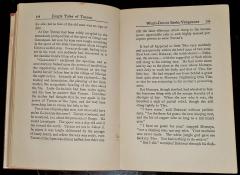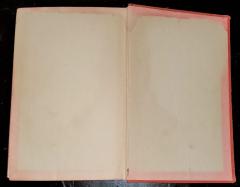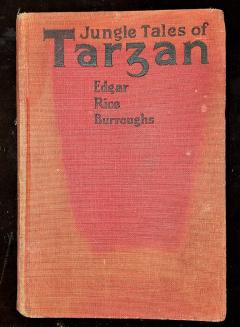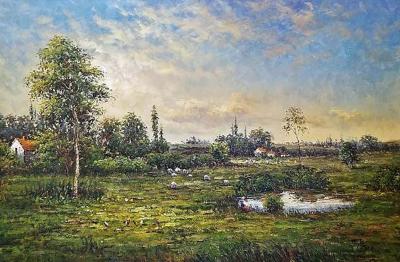Jungle Tales of Tarzan First Edition
-
Description
Jungle Tales of Tarzan First Edition
PRESENTING a GLORIOUSLY RARE BOOK …. Jungle Tales of Tarzan First Edition by Edgar Rice Burroughs Grosset & Dunlap 1st Edition.
Good +, square and tight, light toned some fox, HARDBACK NODJ, published March 1919, 1st Edition, 1st printing with publishers imprint on Spine Panel BTM & set in 3 lines faded to middle & Btm 1, 1919 on Title pg, VG-/GOOD+, AS-IS, NOJACKET, First state binding of red cloth with black titles, , Original Red Cloth Lettered in Black on Front & Spine, , Cover some Soiling & Rub, Some water damage to first couple of pages and page with first illustration loose and separated from spine. Otherwise quite good. Small Spine Tear ends & Sunning Spine CVR, Otherwise internally Nice Tight Clean Light Fox , With 319 pages ,5 1/4 X 7 3/4. ,Twelve tales Tarzan’s First Love’ ‘The Capture of Tarzan’ ‘The Fight for the Balu’ ‘The God of Tarzan’ ‘Tarzan and the Black Boy’ ‘The Witch-Doctor Seeks Vengeance’ ‘The End of Bukawai’ ‘The Lion’ ‘The Nightmare’ ‘The Battle for Teeka’ ‘A Jungle Joke’ and ‘Tarzan Rescues the Moon, Grosset & Dunlap, NY, 1919. Hard Cover. Condition: Good to Fair. No Jacket. J. Allen St. John (illustrator). 1st Edition.
Inscribed by original owner on inside of front cover … “Jack T. Kent, 4939 North St., Dallas, Texas”.
Tarzan of the Apes is a novel written by Edgar Rice Burroughs, the first in a series of books about the title character Tarzan. It was first published in the pulp magazine All-Story Magazine in October, 1912; the first book edition was published in 1914 by A.C. McClurg & Co in Chicago. The publisher was made famous by their original publishing of the Tarzan of the Apes novels and other stories of Edgar Rice Burroughs. Tarzan of the Apes tells the story of Tarzan (“White Skin” in ape language) who is adopted as a baby by the she-ape Kala after his parents, the Lord and Lady Greystoke, pass away after being marooned in West Africa. Immediately popular, Burroughs continued the series into the 1940s with two dozen sequels, and the Tarzan character has been immortalized in books, films and television since. Tarzan was the first literary character to be registered in a trademark. Tarzan and the Castaways was the last finished story by Burroughs, the 24th in his series on Tarzan. In addition to the title novella, the book also includes two short stories about Tarzan. Tarzan: The Lost Adventure is a novel by American writer Joe R. Lansdale, based on an incomplete fragment of a Tarzan novel written by Edgar Rice Burroughs which had been left unfinished at his death. The book was serialized in four parts by Dark Horse Comics, before being published as a single volume in 1995
No dust jacket. Some water damage to cover and first couple of pages, but otherwise good. Back page slightly torn from spine.
Tarzan is a series of twenty-four adventure novels written by Edgar Rice Burroughs, followed by several novels either co-written by Burroughs, or officially authorized by his estate. There are also two works written by Burroughs especially for children that are not considered part of the main series.
The series is considered a classic of literature and is the author’s best-known work. Tarzan has been called one of the best-known literary characters in the world. Written by Burroughs between 1912 and 1965, Tarzan has been adapted many times, complete or in part, for radio, television, stage, and cinema. (It has been adapted for the cinema more times than any book)
Even though the copyright on Tarzan of the Apes has expired in the United States, the name Tarzan is still protected as a trademark of Edgar Rice Burroughs, Inc. Also, the work remains under copyright in some other countries where copyright terms are longer.
Link: https://en.wikipedia.org/wiki/Tarzan_(book_series)
Jungle Tales of Tarzan is a collection of twelve loosely connected short stories by American writer Edgar Rice Burroughs, comprising the sixth book in order of publication in his series of twenty-four books about the title character Tarzan.[1] Chronologically the events recounted in it occur within Chapter 11 of the first Tarzan novel, Tarzan of the Apes, between Tarzan’s avenging of his ape foster mother’s death and his becoming leader of his ape tribe.[2][3] The stories ran monthly in Blue Book magazine, September 1916 through August 1917 before book publication in 1919.
The book is a collection of 12 loosely connected short stories of Tarzan’s late teenage years, set within a year or two before Tarzan first sees white people including Jane Porter. According to Tarzan Alive, Philip José Farmer‘s study of the ape man’s life and career, the incidents of this book occurred from February, 1907-August, 1908 (aside from the eclipse incident in the final tale, there apparently having been no such eclipse visible from equatorial Africa during this period).[4]Cover of Blue Book issue featuring “Tarzan’s First Love”
“Tarzan’s First Love”. Tarzan’s courtship of the female ape Teeka ends in failure when her preference turns to their mutual friend, the male ape Taug. Tarzan wrestles with his humanness versus his ape-ness. The allusion to Helen of Troy enriches the story, making Tarzan and Taug’s fight over Teeka take on symbolic proportions. Stan Galloway writes: “when Burroughs chooses to name Helen as an objective correlative for Teeka, he expects both literal and emotional connections to occur.”[5] Tarzan’s final claim of the story — “Tarzan is a man. He will go alone.”[6]—echoes the plight of Adam in the Garden of Eden.
“The Capture of Tarzan”. Tarzan is taken captive by the warriors of a village of cannibals which has established a village near the territory of the ape tribe. He is saved from them by Tantor, the elephant.
“The Fight for the Balu”. Teeka and Taug have a baby (balu, in the ape language), which Teeka names Gazan and will not allow Tarzan near. She changes her mind after Tarzan saves the baby from a leopard.
“The God of Tarzan”. Tarzan discovers the concept of “God” in the books preserved in the cabin of his deceased parents, to which he pays regular visits. He inquires among members of his ape tribe for further elucidation without success, and continues his investigation among the cannibals of the nearby village and the natural phenomena of his world, such as the sun and moon. Eventually he concludes that God is none of these, but the creative force permeating everything. Somehow, though, the dreaded snake Histah falls outside this.
“Tarzan and the Black Boy”. Jealous of Taug and Teeka’s relationship with their baby, Tarzan kidnaps Tibo, a little boy from the neighboring village to be his own “balu“. He tries with indifferent success to teach the terrified and homesick child ape ways. Meanwhile, Momaya, Tibo’s mother does everything she can think of to find and recover her son, even visiting the hermit witch-doctor Bukawai, a terrible, diseased exile who keeps two fearsome hyenas as pets. He names a price for recovering Tibo she cannot afford, and she leaves disappointed. Afterwards, however, Tarzan, who is moved by Tibo’s distress and his mother’s love, returns the boy to her.
“The Witch-Doctor Seeks Vengeance”. Bukawai attempts to claim credit for Tibo’s return and extort payment from the boy’s mother, but is rebuffed. He plots vengeance against the native family and Tarzan, but is thwarted by the ape man. In this story Tarzan’s life in the wild is contrasted with scenes from the civilized existence of his cousin in England, living the life he might have had had his parents not been marooned in Africa. The cousin does not shine in the comparison.
“The End of Bukawai”. Bukawai, finding Tarzan unconscious after a storm, takes the ape man captive and stakes him out for his hyenas to devour. Escaping, Tarzan leaves the witch doctor in the same trap, in which Bukawai suffers the very fate he had intended for his enemy.
“The Lion”. Tarzan vainly attempts to impress on his ape tribe the necessity of maintaining a strict watch against the hazards and perils surrounding them. To drive home the lesson, he dons a lionskin he has taken from Mbonga’s village and suddenly appears among them, only to find them more vigilant than he had thought, as they mob him and nearly beat him to death. He is saved only by the courage of his monkey friend Manu, which he had also previously under-rated, who risks all to reveal to Teeka and Taug that the “lion” is actually Tarzan.
“The Nightmare”. Having been unsuccessful hunting, Tarzan robs the native village of some rotten elephant meat, which he eats. Becoming ill from the tainted meal, he has a horrible nightmare, in which he dreams himself menaced by a lion, an eagle, and huge snake with the head of a village native. He is carried off by a giant bird but wakes in the fall from its graps, finding himself back in the tree where he’d gone to sleep. He realizes the incidents were not real. Subsequently attacked by a gorilla, he assumes that this too is a product of his fevered imagination, until actually wounded and hurt. He kills the beast, but is left to wonder what is real and what is fantasy. The only thing he is certain of is that he will never again eat the meat of an elephant.
“The Battle for Teeka”. Discovering bullet cartridges in his deceased father’s cabin, Tarzan takes them with him as curios. Subsequently, Teeka is taken by an ape from another tribe, and Tarzan and Taug join forces to trail the kidnapper and rescue her. When they catch up, they are surrounded by the enemy tribe and nearly overwhelmed, until Teeka throws the cartridges at their foes in an apparently futile effort to help. When some of them hit a rock, they explode, frightening the hostile apes and saving her “rescuers”.
“A Jungle Joke”. As part of his campaign of torment and trickery against the native village, whose members he holds responsible for his ape foster mother’s death, Tarzan captures Rabba Kega, the local witch doctor, and puts him in a trap the natives have set to catch a lion. The next day the warriors find they have caught the lion, but it has killed the witch doctor. They take the lion to the village. Tarzan secretly releases it and appears among them dressed in the lionskin he had previously used to trick the apes. Dropping the disguise, he reveals himself and leaves. When the natives muster enough courage, they follow, only to encounter the real lion, which they assume is Tarzan in his disguise again. They are quickly disabused.
“Tarzan Rescues the Moon”. Tarzan frees a native warrior the apes have caught on being impressed by the man’s bravery, angering the rest of the ape tribe. Alienated, he exiles himself to his parents’ cabin. Later, frightened by an eclipse in which darkness appears to devour the moon, they summon him back. Tarzan reassures them by shooting arrows at the “devourer”, and as the eclipse passes is given credit by the creatures for the “rescue”.
Jungle Tales of Tarzan First Edition by Edgar Rice Burroughs 1st Edition
Provenance: From a Dallas Private Collection.
Condition: Fair to Good.
Dimensions: 1.25? Deep, 5.3? Wide and 7.6? Tall
SALE PRICE NOW: $680 -
More Information
Documentation: Signed Period: 1900-1919 Styles / Movements: Traditional Incollect Reference #: 586620 -
Dimensions
W. 5.3 in; H. 7.6 in; D. 1.25 in; W. 13.46 cm; H. 19.3 cm; D. 3.18 cm;
Message from Seller:
Rockwell Antiques, located at 1500 Market Center Blvd., Dallas, TX 75207, specializes in high-end antiques, fine art, and collectibles from around the world. Contact us at 972.685.0808 or rockwellantiquesdallas@gmail.com to explore our personally curated treasures with rich provenance and history.










































